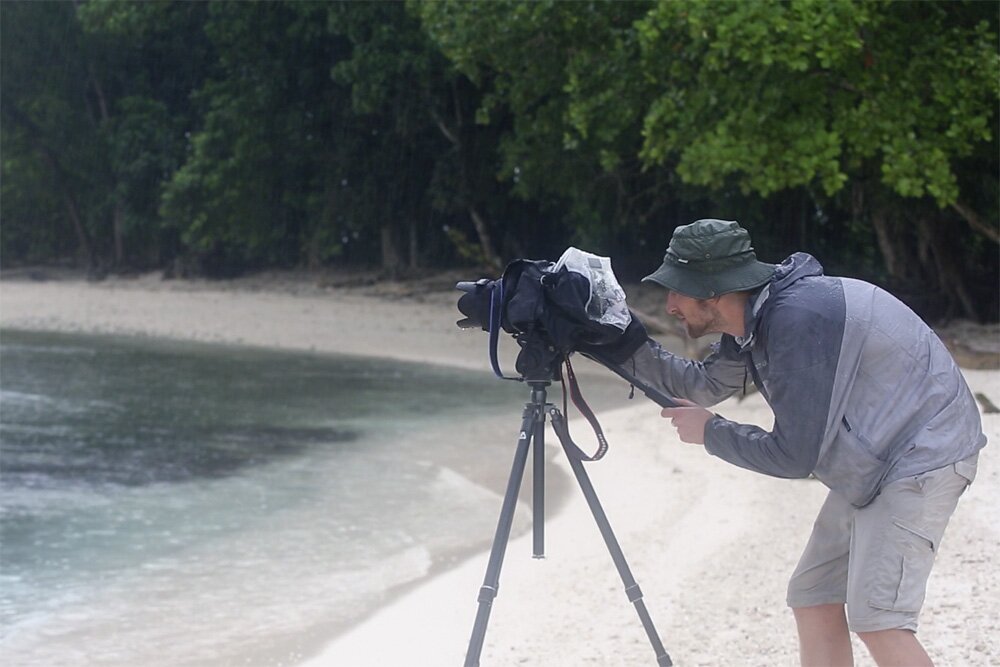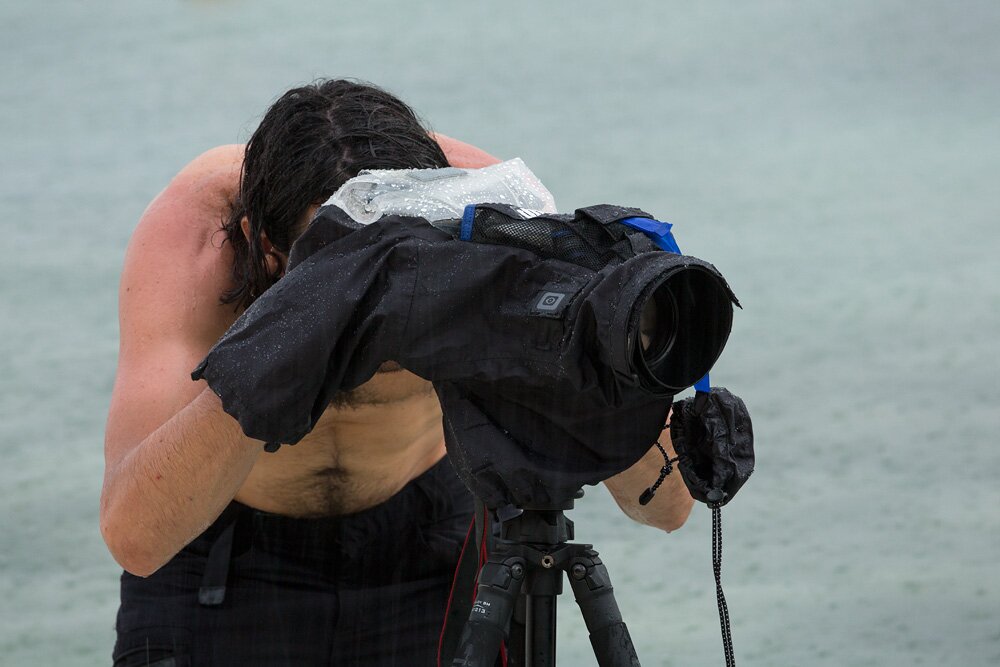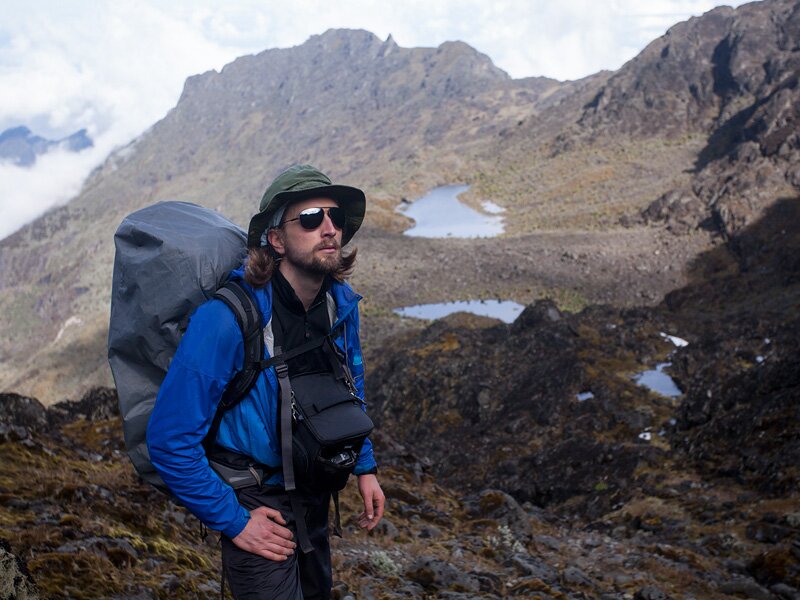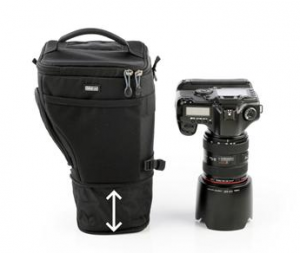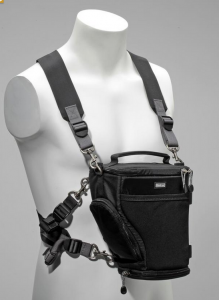On our last trip to the Solomon Islands, Nate and I were faced with an equipment challenge: we needed to capture high-speed footage of small songbirds [specifically Chestnut-bellied Monarchs (Monarcha castaneiventris)] for our upcoming film about speciation – the process by which new species arise.
We were on a tight budget, so the obvious choice for a camera was the Sony NEX-FS700, a relatively inexpensive rental that can easily be adapted to work with our Canon EF lenses and can shoot up to 240 frames per second in Full HD resolution, albeit in short bursts. The challenge was not choosing the camera, however; it was supporting the camera with a very large lens: the Canon EF 500mm f/4L IS, which weighs more than 8 lbs.
The big Canon telephoto is too heavy to hang off the front of the camera without tearing off the camera’s lens mount (or destroying the Metabones adapter that lets us use our EF lenses on the Sony camera). The Sony NEX-FS700, on the other hand, is not small enough to hang off the back of the lens the way you can use an SLR; we didn’t trust the strength of the lens mount (this concern may have been misplaced), but more importantly, such an arrangement would be very back-heavy and difficult to maneuver. We contacted Jag35, because we’ve been very pleased with their other products (like their Full Shoulder Rig v2), and they offered to let us use a prototype of their new NEX-FS700 baseplate.
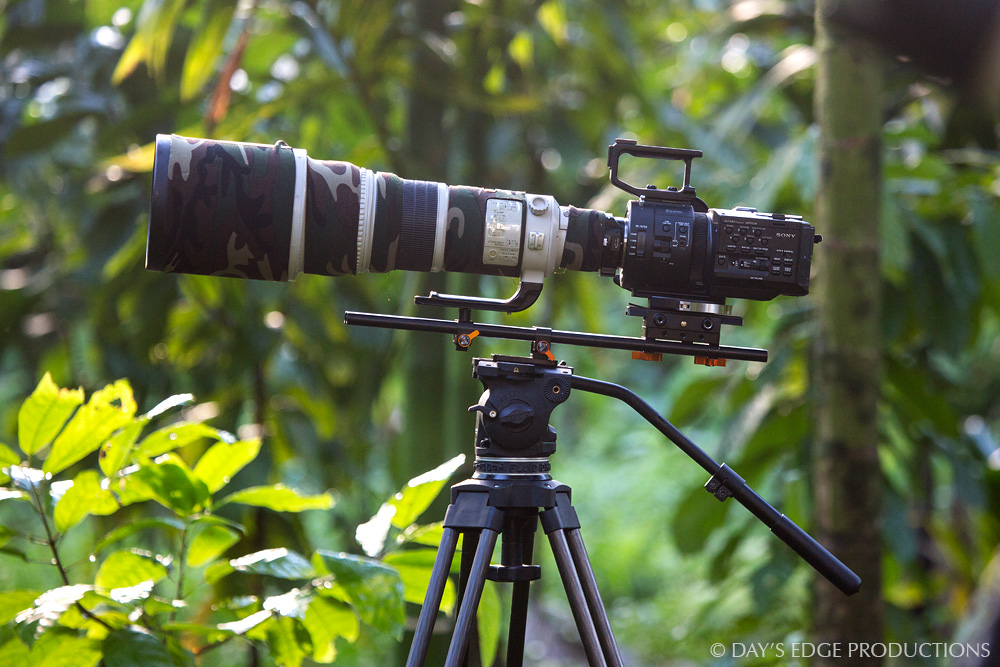
The telephoto setup in the field: Cartoni tripod and fluid head, Jag35 FS700 Baseplate and D|Support, Sony NEX-FS700 with Metabones EF Adapter and Canon EF 500mm f/4L IS lens.
The Jag35 FS700 Baseplate integrates seamlessly with the rest of their accessories –their camera plates, shoulder rigs, and follow focus systems are modular and based around standard 15mm aluminum rods, to which various accessories attach. The FS700 Baseplate has a quick-release system that allows you to attach the FS700 camera on top, and also comes with a sturdy, dedicated tripod plate on the bottom (to which you can attach, for example, a quick-release plate for your fluid head of choice).
Using a long set of rods (we had 20” rods), we were easily able to balance the Sony FS700 with the 500mm Canon lens (and even with the Canon 1.4x teleconverter at times). Because the tripod plate and FS700 baseplate slide independently along the rods, it’s easy to balance your rig on the tripod, even when your rig is as large and unwieldy as ours was!
The final element that made this work was a prototype of the Jag35 D|Support, which allowed us to provide a second point of support for the heavy lens. With the camera attached to the FS700 Baseplate and the lens foot of the 500mm attached to the D|Support, the resulting setup was big and heavy, but also rigid and surprisingly easy to balance and maneuver, thanks to the sliding tripod plate.

Neil using the FS700 and Canon 70-200mm lens on the Jag35 FS700 Baseplate (this time, without the D|Support)
We also used the FS700 with a variety of shorter lenses. With small lenses like the Canon 16-35mm f/2.8 or the 50mm f/1.4, the FS700 doesn’t really need the Jag35 FS700 Baseplate to balance properly on a tripod (though you still might find the whole rod system helpful to mount an external viewfinder, light panel, or follow focus). But with the Canon 70-200mm f/2.8L IS or Sigma 180mm f/3.5 Macro, the lens is fairly heavy and having the rod system and the sliding tripod plate made it much easier to balance the whole rig. Note that with a mid-sized lens like this, the 20″ rods are longer than necessary, but they don’t get in the way. With these lenses (which are much smaller than the 500mm, but still fairly heavy), we attached the D|Support to the lens foot when we had the time, but we also occasionally hung the lenses off the front of the camera without a second point of support. The rigidity of the setup with the D|Support was significantly better than without – this is a solid accessory if you’re going to be using an FS700 (or, very likely, an FS100) with any of these larger lenses.
The verdict: Overall, we would definitely recommend the Jag35 FS700 Baseplate and D|Support. They are solidly built, simple, and easy to use. We felt quite confident mounting our big, unwieldy telephoto rig onto our tripods – and even slinging it over our shoulders to hike through the rainforest – knowing that the Jag35 gear was holding it all together.


